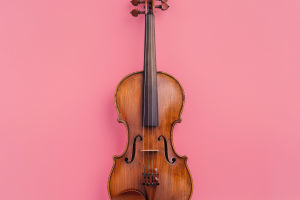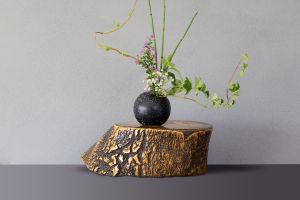The violin, often described as the "queen of instruments," has enchanted audiences for centuries with its rich tones and expressive capabilities.
Whether you're drawn to its role in classical compositions or its versatility in modern genres, the violin remains a symbol of musical sophistication.
Let's delve into the world of the violin, exploring its history, construction, playing techniques, and its impact on music across various genres.
The History of the Violin: A Journey Through Time
Origins: The violin's origins trace back to the early 16th century in Italy. It evolved from earlier string instruments like the viola da gamba and the medieval fiddle. The modern violin, as we know it, was developed by luthiers such as Andrea Amati and later enhanced by the legendary Stradivari family. Its design and craftsmanship set the standard for violins that are still revered today.
Development: Over the centuries, the violin has undergone numerous changes, from its early Baroque form with gut strings and a different shape to the contemporary version with refined tonewoods and advanced construction techniques. The violin has played a crucial role in the evolution of Western classical music, from the compositions of Bach and Vivaldi to the symphonies of Beethoven and Brahms.
Construction: Crafting a Masterpiece
Materials: A violin is typically crafted from a combination of high-quality woods, including spruce for the top, maple for the back, sides, and neck, and ebony for the fingerboard and fittings. These materials are chosen for their tonal qualities and their ability to resonate with the strings.
Design: The violin's design includes the body, neck, fingerboard, strings, and bow. The body, with its hollow interior, amplifies the vibrations of the strings. The neck, fingerboard, and strings are meticulously aligned to ensure proper intonation and playability. The bow, usually made of pernambuco wood or synthetic materials, is essential for drawing sound from the strings.
Playing Techniques: Mastering the Art
Posture and Grip: Proper posture and grip are crucial for producing a beautiful sound on the violin. The violin is held between the chin and shoulder, with the left hand positioned on the fingerboard and the right hand holding the bow. The player must maintain a relaxed yet controlled grip to achieve the best tone and intonation.
Bow Techniques: Bowing techniques include staccato, legato, and spiccato, each producing different effects. Mastery of bow strokes, pressure, and speed allows violinists to convey a wide range of emotions and dynamics in their performance.
The Violin in Music: Genres and Styles
Classical Music: The violin is a cornerstone of classical music, featured prominently in orchestras, chamber music, and solo performances. Composers such as Bach, Mozart, and Beethoven wrote extensively for the violin, creating some of the most cherished works in the classical repertoire.
Folk and Traditional Music: The violin also plays a significant role in various folk and traditional music styles. In Irish, Scottish, and American folk music, the violin (often called the fiddle) is used to create lively and spirited tunes. In Indian classical music, the violin has been adapted to suit the unique musical traditions of the region.
Contemporary Music: In modern times, the violin has found its place in a variety of genres, including jazz, rock, and pop. Violinists like Vanessa-Mae and Lindsey Stirling have brought the instrument into contemporary music scenes, showcasing its versatility and appeal.
The Price of the Violin: What to Expect
The cost of a violin varies widely based on its quality, craftsmanship, and brand.
Beginner Violins: For students or beginners, prices range from $100 to $500. These violins are typically mass-produced and offer good value for those just starting.
Intermediate Violins: For more experienced players, violins priced between $500 and $2,000 provide better craftsmanship and sound quality. These are often hand-crafted and offer improved tonal characteristics.
Professional Violins: High-quality violins, used by professional musicians, can range from $2,000 to over $10,000. Renowned brands and antique instruments can cost significantly more, with some prestigious models reaching prices of $50,000 and beyond.
The violin's enduring charm lies in its ability to express a vast array of emotions and styles, making it a beloved instrument across many musical genres. Its rich history, intricate construction, and diverse applications highlight its significance in the world of music. Whether you're a seasoned musician or an enthusiastic listener, the violin continues to captivate with its elegance and expressive power. Dive into the world of the violin and experience the magic of this extraordinary instrument for yourself!
How To Make The Most Expensive Violin By A Living Maker - Samuel Zygmuntowicz I Short Documentary Magnifissance -
Video By Magnifissance - Joy In the Making


